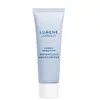What's inside
What's inside
 Key Ingredients
Key Ingredients

No key ingredients
 Benefits
Benefits

 Concerns
Concerns

 Ingredients Side-by-side
Ingredients Side-by-side

Water
Skin ConditioningGlycerin
HumectantSodium Cocoamphoacetate
CleansingPropanediol
SolventCocamidopropyl Betaine
CleansingLauryl Glucoside
CleansingEriophorum Spissum Flower/Stem Extract
Skin ConditioningAcrylates/C10-30 Alkyl Acrylate Crosspolymer
Emulsion StabilisingSodium Cocoyl Glutamate
CleansingSodium Lauryl Glucose Carboxylate
CleansingPanthenol
Skin ConditioningSodium Benzoate
MaskingPotassium Sorbate
PreservativeSodium Hydroxide
BufferingPhenoxyethanol
PreservativeEthylhexylglycerin
Skin ConditioningSorbic Acid
PreservativeParfum
MaskingWater, Glycerin, Sodium Cocoamphoacetate, Propanediol, Cocamidopropyl Betaine, Lauryl Glucoside, Eriophorum Spissum Flower/Stem Extract, Acrylates/C10-30 Alkyl Acrylate Crosspolymer, Sodium Cocoyl Glutamate, Sodium Lauryl Glucose Carboxylate, Panthenol, Sodium Benzoate, Potassium Sorbate, Sodium Hydroxide, Phenoxyethanol, Ethylhexylglycerin, Sorbic Acid, Parfum
Water
Skin ConditioningCaprylic/Capric Glycerides
EmollientXylitol
HumectantSqualane
EmollientGlycerin
HumectantCoco-Caprylate/Caprate
EmollientVaccinium Myrtillus Fruit Juice
Skin ConditioningCanola Oil
EmollientSucrose Stearate
EmollientPentylene Glycol
Skin ConditioningBetaine
HumectantCetearyl Alcohol
EmollientAvena Sativa Kernel Extract
AbrasiveBrassica Campestris Sterols
EmollientButyrospermum Parkii Butter
Skin ConditioningInulin
Skin ConditioningAvena Sativa Kernel Oil
Skin ConditioningVaccinium Myrtillus Seed Oil
Skin ConditioningCeramide NP
Skin ConditioningCeramide AP
Skin ConditioningPhytosphingosine
Skin ConditioningCholesterol
EmollientCeramide EOP
Skin ConditioningHydroxyacetophenone
AntioxidantTocopherol
AntioxidantSaccharide Isomerate
HumectantPropanediol
SolventCetyl Alcohol
EmollientSclerotium Gum
Emulsion StabilisingEthylhexylglycerin
Skin ConditioningMicrocrystalline Cellulose
AbsorbentHelianthus Annuus Seed Oil
EmollientSodium Gluconate
Skin ConditioningHydrogenated Olive Oil Unsaponifiables
EmollientSodium Stearoyl Glutamate
CleansingPhenoxyethanol
PreservativeCellulose Gum
Emulsion StabilisingPolyglyceryl-10 Stearate
Skin ConditioningLactic Acid
BufferingXanthan Gum
EmulsifyingTriethyl Citrate
MaskingPolyglyceryl-6 Behenate
Emulsion StabilisingCitric Acid
BufferingSodium Citrate
BufferingSodium Carrageenan
Emulsion StabilisingBehenic Acid
CleansingGlyceryl Stearate
EmollientSodium Levulinate
Skin ConditioningPotassium Sorbate
PreservativeMaris Sal
Skin ConditioningSodium Cetearyl Sulfate
CleansingRosmarinus Officinalis Leaf Extract
AntimicrobialWater, Caprylic/Capric Glycerides, Xylitol, Squalane, Glycerin, Coco-Caprylate/Caprate, Vaccinium Myrtillus Fruit Juice, Canola Oil, Sucrose Stearate, Pentylene Glycol, Betaine, Cetearyl Alcohol, Avena Sativa Kernel Extract, Brassica Campestris Sterols, Butyrospermum Parkii Butter, Inulin, Avena Sativa Kernel Oil, Vaccinium Myrtillus Seed Oil, Ceramide NP, Ceramide AP, Phytosphingosine, Cholesterol, Ceramide EOP, Hydroxyacetophenone, Tocopherol, Saccharide Isomerate, Propanediol, Cetyl Alcohol, Sclerotium Gum, Ethylhexylglycerin, Microcrystalline Cellulose, Helianthus Annuus Seed Oil, Sodium Gluconate, Hydrogenated Olive Oil Unsaponifiables, Sodium Stearoyl Glutamate, Phenoxyethanol, Cellulose Gum, Polyglyceryl-10 Stearate, Lactic Acid, Xanthan Gum, Triethyl Citrate, Polyglyceryl-6 Behenate, Citric Acid, Sodium Citrate, Sodium Carrageenan, Behenic Acid, Glyceryl Stearate, Sodium Levulinate, Potassium Sorbate, Maris Sal, Sodium Cetearyl Sulfate, Rosmarinus Officinalis Leaf Extract
Ingredients Explained
These ingredients are found in both products.
Ingredients higher up in an ingredient list are typically present in a larger amount.
Ethylhexylglycerin (we can't pronounce this either) is commonly used as a preservative and skin softener. It is derived from glyceryl.
You might see Ethylhexylglycerin often paired with other preservatives such as phenoxyethanol. Ethylhexylglycerin has been found to increase the effectiveness of these other preservatives.
Glycerin is already naturally found in your skin. It helps moisturize and protect your skin.
A study from 2016 found glycerin to be more effective as a humectant than AHAs and hyaluronic acid.
As a humectant, it helps the skin stay hydrated by pulling moisture to your skin. The low molecular weight of glycerin allows it to pull moisture into the deeper layers of your skin.
Hydrated skin improves your skin barrier; Your skin barrier helps protect against irritants and bacteria.
Glycerin has also been found to have antimicrobial and antiviral properties. Due to these properties, glycerin is often used in wound and burn treatments.
In cosmetics, glycerin is usually derived from plants such as soybean or palm. However, it can also be sourced from animals, such as tallow or animal fat.
This ingredient is organic, colorless, odorless, and non-toxic.
Glycerin is the name for this ingredient in American English. British English uses Glycerol/Glycerine.
Learn more about GlycerinPhenoxyethanol is a preservative that has germicide, antimicrobial, and aromatic properties. Studies show that phenoxyethanol can prevent microbial growth. By itself, it has a scent that is similar to that of a rose.
It's often used in formulations along with Caprylyl Glycol to preserve the shelf life of products.
Potassium Sorbate is a preservative used to prevent yeast and mold in products. It is commonly found in both cosmetic and food products.
This ingredient comes from potassium salt derived from sorbic acid. Sorbic acid is a natural antibiotic and effective against fungus.
Both potassium sorbate and sorbic acid can be found in baked goods, cheeses, dried meats, dried fruit, ice cream, pickles, wine, yogurt, and more.
You'll often find this ingredient used with other preservatives.
Learn more about Potassium SorbatePropanediol is an all-star ingredient. It softens, hydrates, and smooths the skin.
It’s often used to:
Propanediol is not likely to cause sensitivity and considered safe to use. It is derived from corn or petroleum with a clear color and no scent.
Learn more about PropanediolWater. It's the most common cosmetic ingredient of all. You'll usually see it at the top of ingredient lists, meaning that it makes up the largest part of the product.
So why is it so popular? Water most often acts as a solvent - this means that it helps dissolve other ingredients into the formulation.
You'll also recognize water as that liquid we all need to stay alive. If you see this, drink a glass of water. Stay hydrated!
Learn more about Water